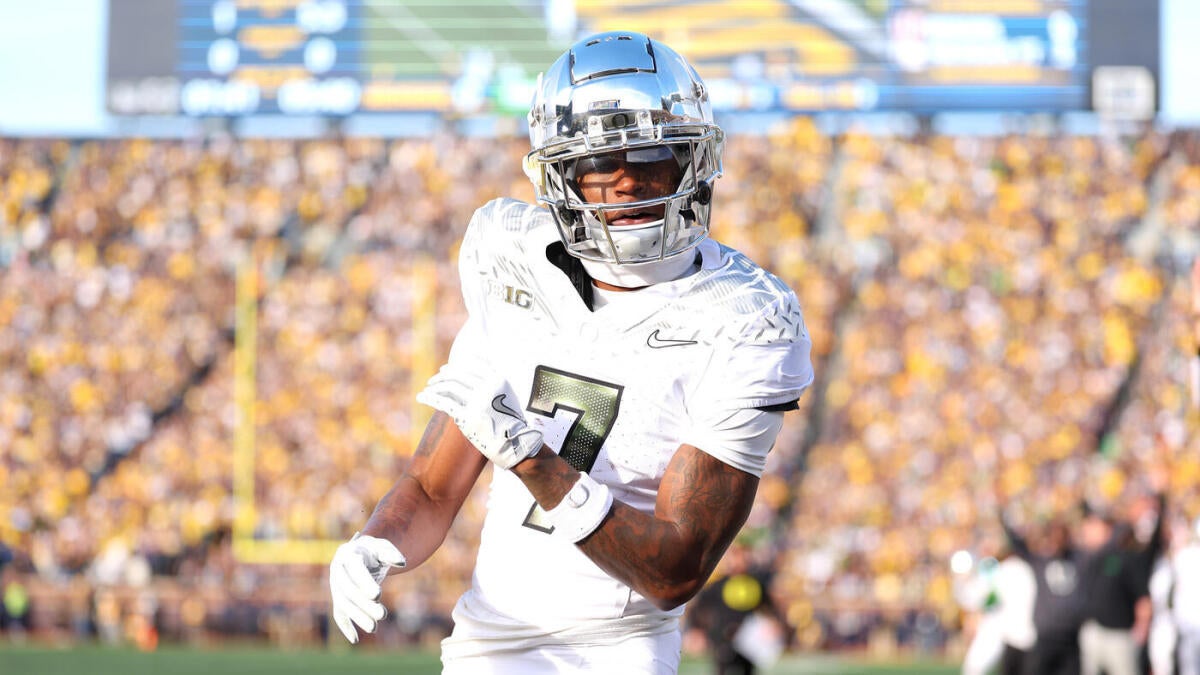Evan Stewart’s injury has sent ripples far beyond a single setback, confronting both the young athlete and the Oregon Ducks with profound challenges as they look toward the 2025 college football season.
Understanding the Injury: A Knee Torn Patellar Tendon
At the heart of this situation is the nature of Stewart’s injury—a torn patellar tendon. This particular knee injury strikes at the core of mobility. The patellar tendon connects the kneecap to the shinbone, playing an essential role when pushing off the ground, running routes, leaping to catch passes, and making sharp cuts, all critical moves for a wide receiver. Repair typically demands surgery and a grueling rehabilitation process, spanning from six to twelve months. For Stewart, suffering this injury in an offseason practice means the coming football season is almost certainly out of reach, given the tendon’s slow and cautious healing timeline. This absence poses an immediate and tangible void in Oregon’s offensive machinery.
Stewart’s Mental Fortitude: A Model of Poise and Patience
What transforms this narrative beyond injury statistics is Stewart’s reaction. Amidst uncertainty, he shows remarkable composure and connection with his supporters. Rather than committing to a fixed timetable, Stewart requests space for his healing, emphasizing the unique and individualized nature of recovery. His gratitude in the face of adversity further humanizes him, reinforcing a mindset grounded in resilience and realism.
Stewart’s decision to forgo the 2025 NFL Draft initially showed a commitment to growth and team leadership. Now, that choice amplifies the emotional gravity of this injury, shifting the spotlight to rehabilitation rather than immediate athletic showcase. His public communication invites respect for the journey ahead, not just from fans but from anyone facing unforeseen hurdles.
Strategic Fallout: Oregon Ducks’ Offensive Evolution
Losing Stewart thrusts the Oregon Ducks into a critical phase of recalibration. As the second-leading receiver in 2024, his ability to stretch defenses and serve as a dependable target was a cornerstone for their offense. Without him, the coaching staff must pivot quickly—accelerating the readiness of less seasoned receivers and retooling offensive strategies.
This reshuffling likely means giving greater roles to emerging players who’ll have to rise to the occasion, absorbing both the spotlight and pressure previously borne by Stewart. The team may also shift emphasis toward a more balanced or run-heavy attack, redesigning play-calling to compensate for the loss of a dynamic receiving threat. This adaptive phase is as much about tactical innovation as it is about cultivating new leadership on the field.
Career Trajectory: Facing Uncertainty With Potential for Redemption
Evan Stewart’s career trajectory now enters a period dense with uncertainty but not devoid of hope. From a medical standpoint, the patellar tendon injury is serious but not insurmountable; there are numerous cases of athletes returning to high-level performance post-recovery. Yet, this path demands rigorous rehabilitation, expert care, and a mental toughness to overcome setbacks.
Professionally, this injury curtails what should have been a pivotal season to demonstrate his readiness for the NFL. Stewart had purposely delayed entering the draft to polish his skills and enhance his draft stock. Now, his comeback story becomes crucial—how successfully he returns will likely influence his professional prospects as much as his pre-injury talent did. The resilience displayed in this phase could define not only his athletic legacy but also his personal growth.
Rising From Adversity: A Narrative of Resilience and Renewal
This episode confirms how precarious sports careers can be, where unforeseen injuries reshape futures. Yet, it also illuminates the qualities that define an athlete beyond raw talent: patience, determination, and the capacity to adapt.
For Stewart, the journey ahead is less about lost opportunity and more about the fight to reclaim it. For Oregon, it’s an invitation to reimagine and rebuild, spotlighting untapped potential within the team. The loss is tangible, but the response opens doors to new growth avenues.
In the grand theater of sports, injuries like Stewart’s test more than physical limits—they reveal character. As he navigates recovery, the story evolving is one deeply human and inspirational, emphasizing the power of resilience in the face of adversity. The 2025 season may be out of reach, but the chapters that follow hold the promise of renewal and triumph yet to be written.

